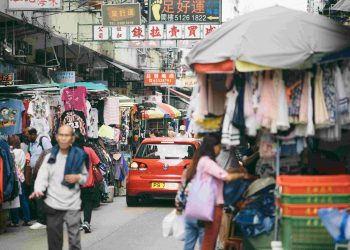Exclusive Fashion Shows for Trend Analysis
The world doesn’t stop to wait for anyone, especially in fashion—a realm that thrives on rapid evolution and shifting aesthetics. Yet, there’s always a quiet dance behind the chaos: the exclusivity of private fashion shows, where cultural narratives are stitched into fabric and tomorrow’s trends are birthed. These events aren’t just about clothes; they’re about decoding societal trajectories. I witnessed this firsthand at a secluded runway event in Paris, far removed from the clamor of mainstream attention.
Sitting there, surrounded by an intimate crowd of insiders, I noticed something fascinating: what appeared to be a mere display of garments was intricately interwoven with philosophical statements, reflections on technology’s impact, and bold challenges to traditional gender norms. This microcosm of creativity served not only as an aesthetic indulgence but as a mirror of where we, as a society, might be heading.
Why Exclusivity Is the Catalyst of Creativity
In an information-saturated age, exclusivity does more than create allure; it fosters a focused dialogue. Private fashion shows strip away the noise, allowing unfiltered creative expressions to shine. Consider this: whereas public runways cater to consumer trends, exclusive settings cater to innovation, a breeding ground for ideas that often challenge the status quo.
Think of it in broader terms. Exclusive environments foster innovation in multiple industries—from Silicon Valley startup incubators to NASA’s closed engineering labs. Our mental bandwidth is limited, and so controlled spaces amplify intentionality. Isn’t it ironic how exclusion often builds the concepts intended to include and impact society at large?
Psychology at Play: Breaking with Conformity
From a psychological standpoint, exclusivity taps into a principle known as “scarcity bias.” The fewer people have access to something, the more they value it—and the more they notice the ideas it embodies. But within a creative ecosystem, exclusivity functions as a sandbox. It ensures the freedom to experiment without the fear of immediate rejection. Think of how artistic movements like Dadaism or Bauhaus thrived on such secluded environments before influencing global aesthetics.
On that quiet Parisian runway, I was astonished by how many ensembles incorporated wearable technology. One dress featured embedded LEDs that responded to applause levels, mimicking societal feedback loops. It was a powerful metaphor for how technology could render its user either a puppet or a creator, depending on its application—a provocative invitation to rethink our dependence on tech.
Trend Analysis: Predicting Future Societal Shifts
Fashion has always been more than fabric; it’s anthropology in motion. Exclusive shows are canaries in the coal mine, signaling tectonic cultural shifts before they surface to the public. If you spot recurring themes—abstract patterns hinting at climate change, or de-gendered designs challenging binary norms—it’s wise to read them as markers of a broader societal pulse.
For instance, minimalist aesthetics that dominated recent collections reflect not just an artistic preference but society’s growing focus on sustainability and anti-consumption. As philosopher Marshall McLuhan reminded us, “Art is whatever you can get away with,” but it also reflects the boundaries of what society is willing to embrace at any given moment.
Actionable Advice: How You Can Decode Trends Like an Expert
Exclusive shows are not easily accessible, but that doesn’t mean you can’t engage with their ideas remotely. Here are practical steps anyone can take to participate in forward-thinking fashion analysis:
-
Stay Curious:
Study high-profile and offbeat collections online. Look for subtleties in fabric, silhouette, and theme. -
Read Beyond Fashion:
Explore art, sociology, and philosophy to contextualize the societal shifts influencing design choices. -
Observe Patterns:
Track recurring symbols or collaborations, such as intersections between tech companies and fashion brands. -
Network Virtually:
Join online forums where professionals discuss fashion forecasting—starting conversations could position you as an emerging voice. -
Experiment Locally:
Emulate the ideas in your wardrobe. Style isn’t just about imitation; it’s self-expression adapted to context.
Breaking into the complexities of exclusive fashion requires dedication to both artistic and analytical thinking. The runway, after all, is only the first chapter; you determine the story’s next page through the choices you make.
The Bigger Picture: Careers and Technology
Beyond trendy outfits, the exclusive ecosystems of fashion forecasting have relevance in professional and technological realms. Machine learning algorithms are now used to mine collections and predict actionable trends, reshaping career roles from stylists to data scientists. Imagine a future where AI will not only forecast trends but actively collaborate with designers to create garments in real time.
Does this signal the erosion of human creativity? Not if we remain vigilant. Just like the dress responding to audience applause, technology is only as impactful as the intent behind its use. We’re at a juncture where continuous learning—both technical and creative—becomes not just a professional asset but a moral obligation.















